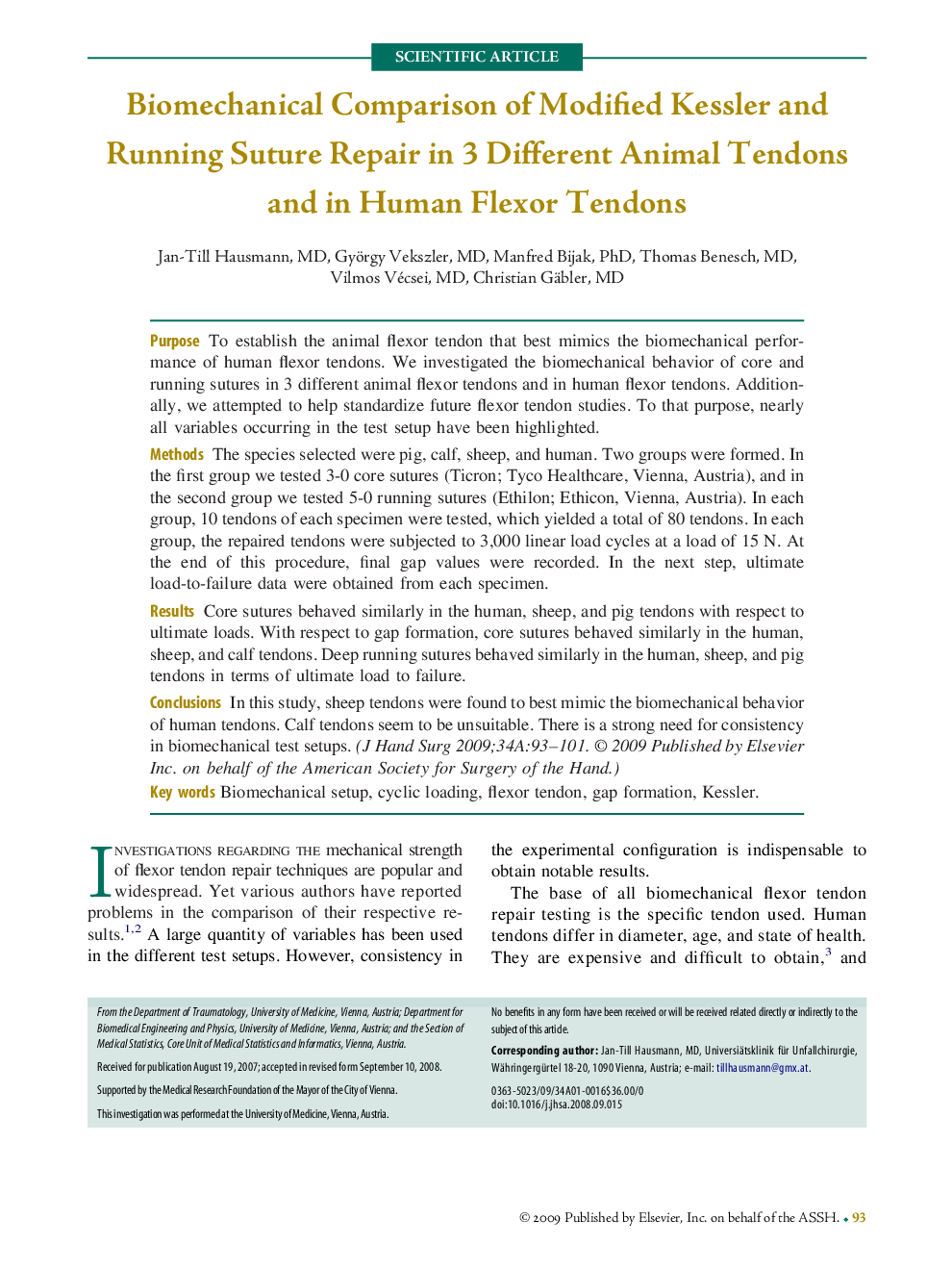| Article ID | Journal | Published Year | Pages | File Type |
|---|---|---|---|---|
| 4069315 | The Journal of Hand Surgery | 2009 | 9 Pages |
PurposeTo establish the animal flexor tendon that best mimics the biomechanical performance of human flexor tendons. We investigated the biomechanical behavior of core and running sutures in 3 different animal flexor tendons and in human flexor tendons. Additionally, we attempted to help standardize future flexor tendon studies. To that purpose, nearly all variables occurring in the test setup have been highlighted.MethodsThe species selected were pig, calf, sheep, and human. Two groups were formed. In the first group we tested 3-0 core sutures (Ticron; Tyco Healthcare, Vienna, Austria), and in the second group we tested 5-0 running sutures (Ethilon; Ethicon, Vienna, Austria). In each group, 10 tendons of each specimen were tested, which yielded a total of 80 tendons. In each group, the repaired tendons were subjected to 3,000 linear load cycles at a load of 15 N. At the end of this procedure, final gap values were recorded. In the next step, ultimate load-to-failure data were obtained from each specimen.ResultsCore sutures behaved similarly in the human, sheep, and pig tendons with respect to ultimate loads. With respect to gap formation, core sutures behaved similarly in the human, sheep, and calf tendons. Deep running sutures behaved similarly in the human, sheep, and pig tendons in terms of ultimate load to failure.ConclusionsIn this study, sheep tendons were found to best mimic the biomechanical behavior of human tendons. Calf tendons seem to be unsuitable. There is a strong need for consistency in biomechanical test setups.
